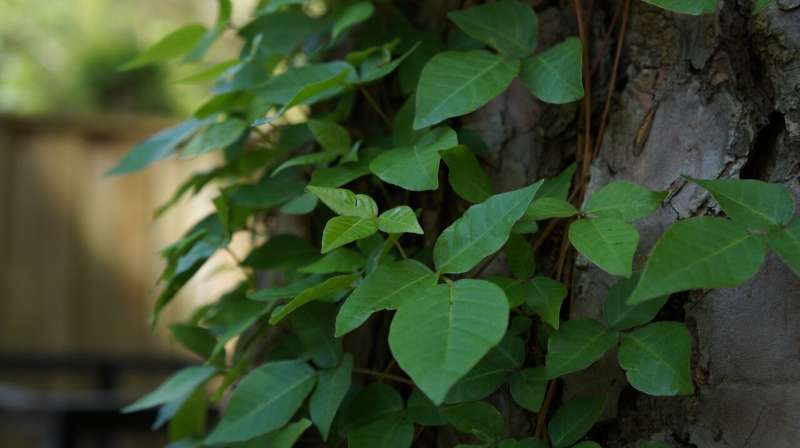A Toxicologist's Insight into Poison Ivy and Bee Stings: Understanding Nature's Chemical Defenses

Learn how poison ivy's urushiol and insect venom serve as natural defenses, and discover effective strategies to prevent and treat allergic reactions and pain from these common outdoor hazards.
Enjoying outdoor activities often brings us into contact with nature's diverse array of plants and animals, some of which can pose health risks through their chemical defenses. Toxicologists at the University of Virginia's Blue Ridge Poison Center frequently treat patients suffering from allergic reactions to poison ivy and pain from bee or wasp stings. These organisms use toxins mainly to defend themselves. By understanding their mechanisms, we can better prevent and manage encounters with these natural hazards.
Poison Ivy: An Ubiquitous Source of Allergic Reaction
Poison ivy, recognizable by its triad of leaves, which may be smooth or jagged, can take various forms from ground cover to climbing vines. The plant produces an oily substance called urushiol throughout its leaves, stems, roots, and berries. When urushiol comes into contact with skin, it triggers an allergic response in about 75% of individuals, due to its antimicrobial properties that protect the plant from diseases.
Urushiol transfers easily from the plant to skin, clothing, tools, or pets, making accidental exposure common. Once on the skin, urushiol binds to skin cells, prompting a delayed immune response that results in redness, itching, blisters, and swelling typically 12 to 48 hours after contact. The rash itself is not contagious; however, the oil on contaminated objects or clothing can spread the allergic reaction. Immediate washing with soap and water, removing contaminated items, and applying topical steroids or antihistamines help manage symptoms. Severe cases may require oral steroids.
Bee and Wasp Stings: Natural Defenders
Bees and wasps become most active in late summer, and their stings are primarily a defensive mechanism. They inject venom— a clear, slightly acidic fluid containing enzymes like phospholipase A2, which damages cell membranes, and peptides such as melittin, which causes pain. The venom also includes histamine and epinephrine, affecting blood vessels and the immune response.
A sting causes an immediate burning pain, followed by redness and swelling that peaks within hours. Reactions vary from mild to severe, depending on individual sensitivity. In some cases, the immune system overreacts, releasing large amounts of histamine, which can lead to anaphylaxis—a life-threatening allergic reaction with difficulty breathing, low blood pressure, and airway swelling. Multiple stings can be dangerous even for non-allergic individuals due to the volume of venom.
Quick removal of the stinger, if lodged, and symptomatic treatment with antihistamines, steroid creams, or pain relievers are effective. Severe allergic reactions require emergency intervention with epinephrine and hospitalization.
Understanding and Prevention
Knowing the chemical defenses of poison ivy and stinging insects enhances our ability to avoid or reduce adverse reactions. Proper identification, protective clothing, and caution during peak activity seasons are essential. Immediate decontamination after exposure and prompt treatment can mitigate symptoms and prevent complications.
Source: https://medicalxpress.com/news/2025-08-toxicologist-poison-ivy-bee-pain.html
Stay Updated with Mia's Feed
Get the latest health & wellness insights delivered straight to your inbox.
Related Articles
Potential Funding for Gender-Affirming Surgeries Under Medicare Under Review
Australia's independent committee is reviewing whether Medicare should fund gender-affirming surgeries for adults, aiming to improve access and health outcomes for transgender individuals.
New Cholesterol-Lowering Drug Shows Promise for High-Risk Heart Patients
A new cholesterol-lowering medication, Obicetrapib, shows promising results in reducing LDL cholesterol and Lp(a) levels in high-risk cardiovascular patients, potentially offering a new treatment option to prevent heart attacks and strokes.
Understanding the Risks of Black Mold: What Does Science Say?
Scientific research shows that household black mold poses minimal toxicity risk but can trigger allergic reactions and worsen asthma. Learn what science really says about mold safety.



